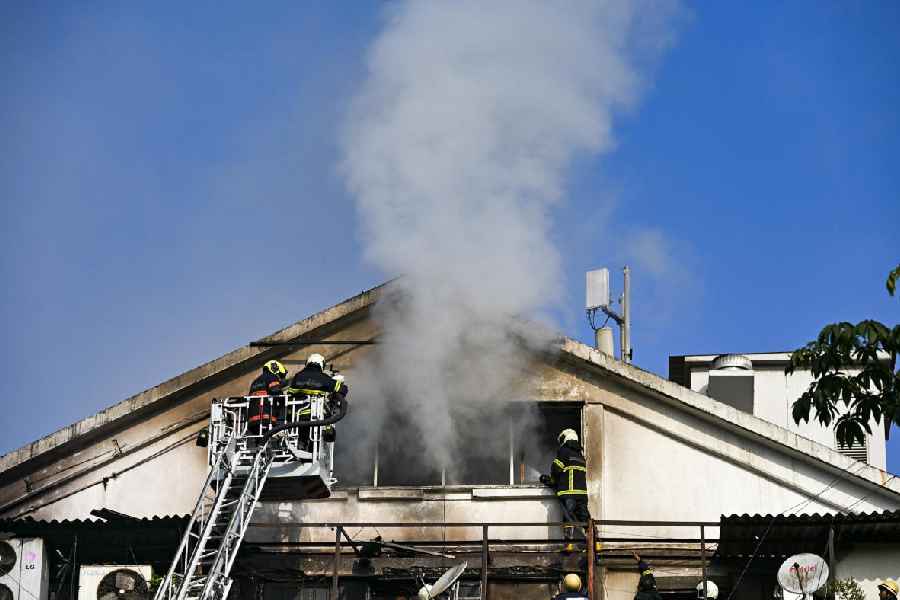
Berhampur, Nov. 23: When farmers across the state are struggling for sustenance and survival amid scanty rainfall and burgeoning debt, tribal farmers in Gajapati district have managed to turn the rugged landscape into farmable land, watered by rainwater and natural springs.
In Gajapati's tribal-dominated Gumma block, terraced paddy fields are widely used in rice farming on the hilly or mountainous terrain that is fed by four natural springs. These fields were carved onto the mountains by the ancestors of the indigenous people. The local residents have been its custodians for centuries.
This mode of farming is capable of sustaining the population living in the mountainous terrain, while farmers across the plains of Odisha continue to struggle with water scarcity and drought.
Terrace cultivation - also known as step farming - is used to cultivate sloped land such as hilly or mountainous terrain and is a common sight in Gumma block.
"Rice terraces illustrate the remarkable ability of human culture to adapt to new social and climate pressures as well as to implement and develop new ideas and technologies," said Santosh Kumar Patra, who works as a gram rozgar sevak (GRS) in Gumma block.
"The terrace is a low, flat ridge of earth built across the slope, with a channel for runoff water just above the ridge. Usually, terraces are built on a slight gradient so that the water caught in the channel moves slowly toward the terrace outlet. The building of the rice terraces consists of blanketing walls with stones and earth, which are designed to draw water from a natural spring above the terrace clusters. Stream water is channelled down to the terraces for irrigation and the rice terraces are flooded throughout the year," he said.
The system has several benefits. Regular maintenance of the land surface through its use as rice fields prevents landslide and helps to conserve the ecosystem. It is also effective for growing crops that require much water, such as rice, he said.
"Today, rice terraces are growing into a focus of green tourism in many parts of the world. We can also tap that potential in Gajapati," he said.
Patra described the source of a stream flowing beneath an old mango tree, locally called Dariybaul, situated in Adya Sahi under Namangada panchayat for six generations.
"The place is situated in an inaccessible area. You need to trek to reach the spot to take photos," he said.
Philiman Raita, 50, Basana Raita, 55, and Nibana Raita, 38, of Adya Sahi - a Soura-tribe dominated village - have turned to this mode of farming. They said all 23 families of the inaccessible village mainly depend on terrace cultivation watered by the Kanibajada stream from the Ridiul mountain.
"About 200 acres in and around the area watered by the stream is ideal for the cultivation of rice, kangu, jahna, mandia, kandula and others all through the year," said one of them.
However, Gumma block samiti member Khetribar Bishoyi said that though the stream from the mountains support terrace cultivation, the people of the area face problems of drinking water.
"There are four mountain streams in Gumma block. But their potential have not been tapped for use as drinking water with check dams at various places. We have six tube wells in the area, which become defunct from April till the end of the summer. Excess water from these four mountain streams flow into Gajapati Sagar to the Mahendratanaya river and finally into the sea. It must be tapped," he said.











